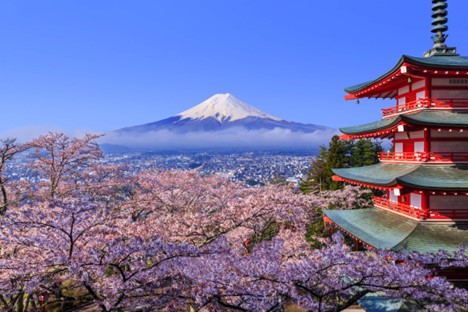
To listen to this reflection as a podcast, click here.
For most of its history, the island nation of Japan has remained culturally isolated from the rest of the world.
That began to change during the second half of the 20th century. After its catastrophic defeat in World War II, Japan quickly became a major player on the global economic stage.
Many Japanese enthusiastically embraced features of Western culture. Crowds of young women screamed just as loudly for the Beatles in Tokyo as they did in London or New York City. Baseball became a national obsession. California Angels superstar Shohei Otani, who both pitches and slugs home runs, is currently considered one of the greatest players in the history of the game. American fast food restaurants, especially McDonald’s, dominate the Japanese “take-out” scene.
But things are different when it comes to religion.
Western faiths have hardly made a dent in the hearts and minds of the Japanese people. Historians estimate that Japan has never been more than 1% Christian, despite five centuries of earnest efforts by Catholic and Protestant missionaries.
It’s ironic, then, that Shusaku Endo, a passionate follower of Jesus, was considered Japan’s greatest living writer at the time of his death in 1996. The novelist was routinely marginalized and diminished for buying into “Western spirituality,” even though his books have been widely loved and respected.
Endo was frequently asked why Christianity has never really found a home in Japan, and has at times been brutally repressed.
He observed that the Jesus-following life, properly understood, speaks to the inner person. Japanese are traditionally wary of revealing their feelings, and emotional vulnerability is considered by many a risk not worth taking.
More than anything else, however, Endo suspected that his fellow citizens’ rejection of Christianity is connected to the Western emphasis on God as Father.
An old Japanese saying declares that the four most dreadful things on earth are “fires, earthquakes, thunderbolts, and fathers.” Fathers may be obeyed and respected in Japan. But they are not generally loved. A stereotypical father works all day, comes home late, and eats alone – a meal he would certainly not prepare for himself. Nor are fathers expected to make apologies, express gratitude, offer encouragement, or provide grace. But they can definitely be counted on to offer criticism.
In Japanese culture, failure is unacceptable. Some local volcanoes have even become places where young people who have disappointed their fathers leap to their deaths.
Endo realized that in the Japanese mind, very little was attractive about surrendering one’s life to the Father-God presented by the Bible.
But mothers are a different matter. Mothers traditionally provide the emotional glue that holds together Japanese families and neighborhoods.
How could he introduce his nation to the mother-love of God?
One of the reasons few Americans have ever heard of Shusaku Endo is that Jesus, especially among evangelical Christians, is often presented as a “man’s man.” He is a tough-as-nails Savior who displays cosmic authority, performs acts of miraculous power, and knocks over the tables of the moneychangers in the Temple. Not many American sermons spotlight texts that reveal the mother-love of God.
But such texts do exist.
In Isaiah 49:15, the Lord says, “Could a mother forget a child who nurses at her breast? Could she fail to love an infant who came from her own body? Even if a mother could forget, I will never forget you.” Jesus says in Luke 13:34, “Jerusalem, Jerusalem, you who kill the prophets and stone those sent to you, how often I have longed to gather your children together, as a hen gathers her chicks under her wings, and you were not willing.” And in Luke 15:8-10, he compares God to a woman who searches her house relentlessly until she finds a lost coin, suggesting that God exerts the same rescue efforts for lost people.
God is the nursing mother, the sheltering hen, and the woman who will never give up.
Endo made it his mission to reveal to his own people that these are pictures of the heart of God. In the presence of such a God, failure was not final for Peter. And failure is not final for us. We are still loved. He wrote, “My way of depicting Jesus is rooted in my being a Japanese novelist… [I write] for the benefit of Japanese readers who have no Christian tradition of their own and who know almost nothing about Jesus.”
Author James Bryan Smith wrote recently about a class of seminarians. Their professor asked them to close their eyes and picture God. What did they see?
Most of these men and women preparing for Christian ministry visualized the same thing that leaps into the minds of most Western people:
God is an old man with a flowing beard. He is Michelangelo’s authoritarian Father-God riding on the clouds up on the ceiling of the Vatican’s Sistine Chapel.
It’s true that that picture resonates with a number of biblical texts. But we cannot say – we must not say – that’s all we know about God.
The professor urged his students to consider a different starting point:
When you think about God, first picture Jesus.
And realize that the God who is really there embodies all of the virtues and values that make life truly worth living.
